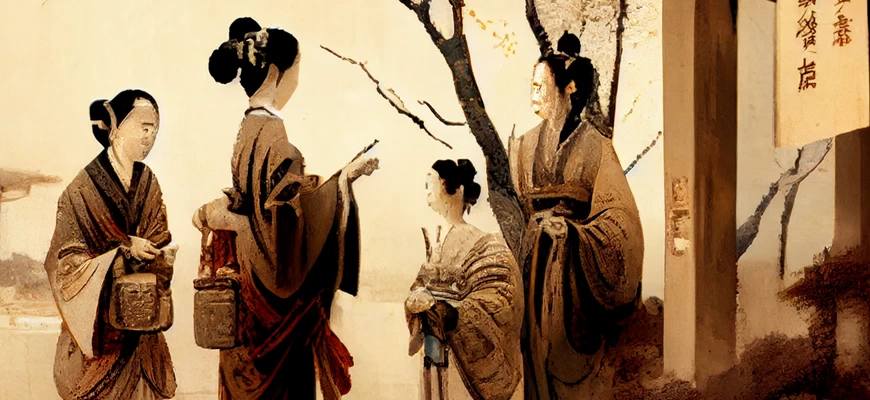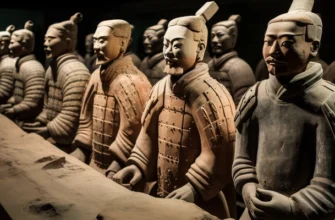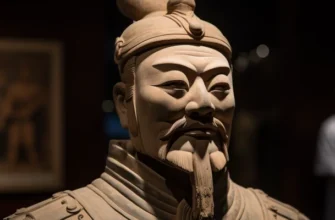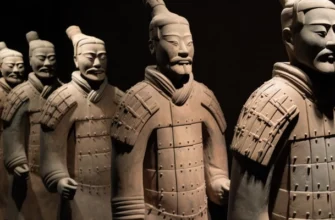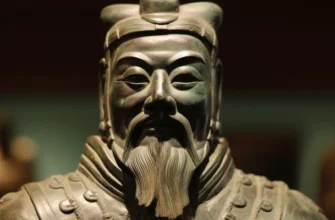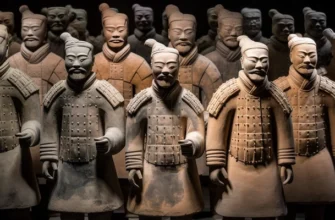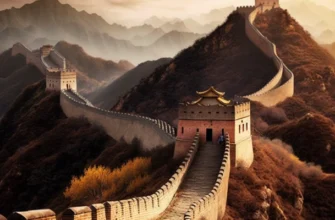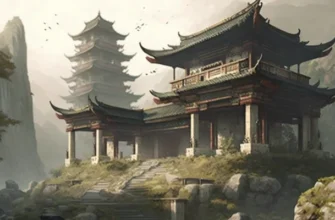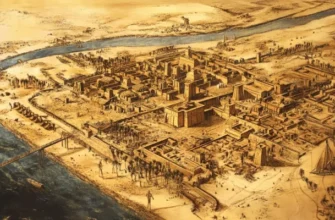The culture of ancient China is one of the most developed and influential cultures in the world. It includes art, literature, philosophy, religion, science, and technology. Chinese culture emerged about 5000 years ago and went through various stages of development.
Two philosophical systems played an important role in the culture of ancient China – Confucianism and Taoism. Confucianism attached great importance to morality, education, discipline, and mental development, and believed that good governance of the state was based on the ruler’s proper treatment of the people. Taoism, on the other hand, emphasized harmony with nature and inner peace, the desire for no interference in life, and the understanding of the laws of the universe.
Chinese art has a rich history and development. The most famous art forms of ancient China include painting, calligraphy, ceramics, sculpture, music, and dance. Chinese art masters are known for their techniques and the variety of styles that have evolved over the centuries.
One important aspect of ancient Chinese culture is the social structure. China was a feudal state with emperors at the top and nobility, merchants, artisans, and peasants at the lower levels.
The art of ancient China
The art of ancient China included a variety of forms of expression. Painting occupied an important place in the cultural life of the country. These were mainly landscape compositions that reflected the spiritual harmony of Chinese nature. Sculpture mainly symbolized religious images. Ceramics was known for its experiments with shape and glaze, which made it possible to create incredibly complex and detailed products.
The art of ancient China is one of the main components of the country’s culture. Religion and philosophy had a significant impact on the development of art, which allowed for the creation of unique masterpieces that have been preserved to this day.
Ancient Chinese painting is characterized by its special beauty and uniqueness. The Chinese painting tradition uses various techniques, including brushwork and contour painting. The main themes of ancient Chinese art were nature, landscapes and birds, which symbolized harmony and spiritual purity.
Ceramics of ancient China is one of the most important components of this country’s art. Chinese ceramics is characterized by its elegance and beauty. Chinese craftsmen used various techniques to create unique and elegant ceramics.
The sculpture of ancient China is also very interesting and unique. It is distinguished by its grace and elegance. The main materials for creating sculptures were stone and bronze. Many sculptures were religious in nature and symbolized spirituality and harmony.
The traditional art of ancient China is extremely rich and diverse. It reflects the cultural heritage of this country and its ancient traditions.
It reflects the cultural heritage of this country and its ancient traditions. Understanding and studying the art of ancient China is important for preserving and promoting the cultural heritage of this country. Today, the art of ancient China is kept in various museums around the world and is a subject of study for many artists and cultural critics.
Interest in Chinese culture and art is becoming increasingly popular among tourists and pilgrims. Chinese museums and galleries are popular destinations for those who want to learn more about the art and culture of ancient China.
All of these magnificent masterpieces of ancient Chinese art not only impress with their beauty and elegance, but also reflect important aspects of the culture and religion of ancient Chinese civilization. Studying and preserving the art of ancient China is an important task for preserving the cultural heritage of this great country.
Philosophy of ancient China
The philosophy of ancient China was mainly aimed at human development in moral, social and spiritual aspects. Confucianism, named after its founder Confucius, became one of the main philosophical schools. Another important movement was Taoism, which believed in natural harmony and peace of mind.
The philosophy of ancient China is a rich and rather complex tradition that began its development more than 2500 years ago. It includes various schools and movements, such as Confucianism, Taoism, Moism, and Legalism. Each of these movements has its own ideas about the world and human beings, its own teachings and methods of action.
One of the most famous philosophers of ancient China is Confucius, who developed Confucianism. His teachings were aimed at raising the level of morality and ethics in society through personal development. Another famous philosopher of ancient China is Lao Tzu, the founder of Taoism, whose teachings were aimed at achieving harmony with nature and self-awareness.
The philosophy of ancient China is an important part of the culture of this country and has a great influence on modern society. It provides an opportunity to better understand the Chinese worldview and cultural values. Modern research in the field of ancient Chinese philosophy contributes to the development of spirituality and raising the level of consciousness in society.
Confucianism, Taoism, and other philosophical movements of ancient China are integral parts of the rich culture and history of this country. Each of these movements has its own ideas about the world and human beings, its own teachings and methods of action.
Confucianism is based on the idea of raising the level of morality and ethics in society through personal development. Confucius’ teachings include such concepts as humanity, justice, respect for elders, and self-education.
Taoism, founded by Lao Tzu, was aimed at achieving harmony with nature and self-awareness. The teachings of Taoism include such concepts as unity with nature, action without action, and self-improvement.
Other philosophical movements of ancient China include Moism and Legism. Moism was aimed at achieving harmony and coexistence in society, while legism emphasized the role of law and discipline in society.
Each of these philosophical trends has its own unique relationship with Chinese culture and history and makes its own contribution to the formation of the Chinese worldview.
The social structure of ancient China
The social structure of ancient China was built on the basis of hierarchy and the division of people by social status. This structure included the following social groups:
Emperor and his family – occupied the top of the hierarchy and had absolute power in the country.
The nobility – consisted of nobles and high-ranking civil servants. They had great influence on the government and held leading positions in the government.
Middle class – consisted of free peasants and artisans. They were free citizens who were engaged in agriculture or crafts.
Slaves – consisted of slaves and dependent peasants. They were the property of the gentry and were obliged to obey their orders.
This social structure was fairly stable and remained in place for a long period of Chinese history. At the same time, there were periods when lower social groups were discriminated against and exploited, leading to social conflicts and uprisings.
The influence of Confucianism, Taoism and other cultural movements on the formation of Chinese civilization
Confucianism, Taoism, and other cultural movements had a significant impact on the formation of Chinese civilization.
Confucianism has been the main philosophical trend in China for a long period of history. It promoted responsibility and respect for elders, emphasized education and morality, and preserved traditions and rituals. These principles formed the foundations of Chinese culture and became the basis of the social structure, ethics, and morality in China.
Taoism was another important philosophical trend that promoted harmony with nature, commitment to natural forces, and religious practices. It also contributed to the formation of China’s culture and ideology.
In addition, other cultural movements, such as Buddhism, Confucian Neo-Confucianism, Taoism, etc. also had an impact on Chinese civilization. They have contributed to the development of culture, literature, art, and other aspects of Chinese life.
All of these philosophical trends and cultural movements have shaped the unique Chinese culture, which still remains an important factor in world culture and history.
Conclusion
The culture of ancient China is one of the most influential and developed cultures in the world, which has played an important role in shaping the modern Chinese identity and has a great impact on the entire world culture.
Confucianism, which is the basis of Chinese morality and social structure, has a significant influence on the modern Republic of China. Taoism, with its teachings of harmony and tranquility, also influences modern Chinese thinking and approaches to life.
The culture of ancient China has influenced many aspects of life, such as art, literature, music, cooking, and more. Technological developments of ancient China, such as paper, compass, porcelain, portable printing press, also changed the world.
The modern Republic of China and its culture are the result of centuries of development, driven by the influence of ancient philosophies and cultural movements. It is important to preserve and study this heritage in order to maintain and develop traditions that contribute to the development of humanity.
